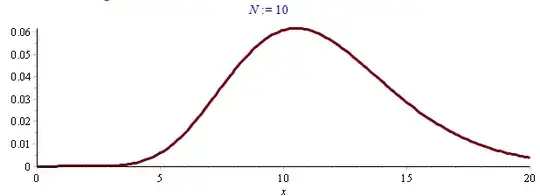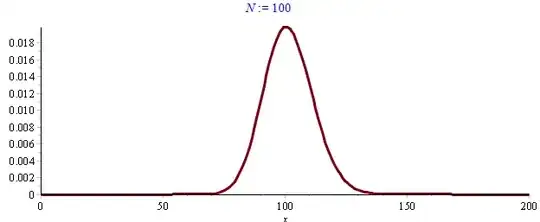Is the limit $$ e^{-x}\sum_{n=0}^N \frac{(-1)^n}{n!}x^n\to e^{-2x} \quad \text{as } \ N\to\infty \tag1 $$ uniform on $[0,+\infty)$?
Numerically this appears to be true: see the difference of two sides in (1) for $N=10$ and $N=100$ plotted below. But the convergence is very slow (logarithmic error $\approx N^{-1/2}$ as shown by Antonio Vargas in his answer). In particular, putting $e^{-0.9x}$ and $e^{-1.9x}$ in (1) clearly makes convergence non-uniform.
One difficulty here is that the Taylor remainder formula is effective only up to $x\approx N/e$, and the maximum of the difference is at $x\approx N$.


The question is inspired by an attempt to find an alternative proof of $\epsilon>0$ there is a polynomial $p$ such that $|f(x)-e^{-x}p|<\epsilon\forall x\in[0,\infty)$.